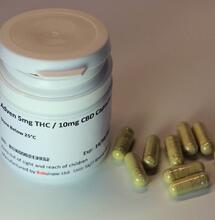Part One: Mother Nature. Friend and Foe!!

Top end growth may well be your ultimate goal, but don't neglect the foundations that your plants are built on. Concentrate on a developing a healthy root system and you'll achieve healthier growth and bigger yields.
Top end growth may well be your ultimate goal, but don't neglect the foundations that your plants are built on. Concentrate on a developing a healthy root system and you'll achieve healthier growth and bigger yields.
Top end growth may well be your ultimate goal, but don't neglect the foundations that your plants are built on. Concentrate on a developing a healthy root system and you'll achieve healthier growth and bigger yields.
First off let's all agree on one thing; the roots are the most important part of your plant. The roots are responsible for delivering water and minerals. The amount of water and nutrient a plant uptakes is directly related to its rate of growth and ultimately the size of the fruits it produces. Without a well developed root zone, you are not going to achieve well developed buds.
But roots just take care of themselves right? Well in most cases yes, to an extent. But when roots are not given what they need, they can become damaged and this is where the problems can start. A damaged root zone is vulnerable and nature will step in and attack! Diseases (or pathogens) will invade a root zone and at best slow down growth, at worst ruin an entire crop.
So, how do you prevent attack? Firstly, provide roots with what they need. A well draining, aerated root zone that is clean and kept at the right temperature - as close to 22°C as you can - will keep roots healthy and happy.
One important fact that should motivate you to take care of the roots is that, when stressed, the roots will emit a hormone called ethylene; this hormone is recognized by some plant pathogens as a sign of weakness and a motivation to attack!
The Invaders: The Bad Guys
| Healthy hydroponically grown roots |
Root problems develop when pathogens attack the roots. Put simply, a pathogen is an organism that induces sickness in a plant. They live all around us (and in some cases on us!) and remain harmless as long as the plants are in good health. But as soon as your plants become damaged or stressed, they attack.
Know your enemy; here is a quick explanation of two of the most common root zone pathogens;
Rhizoctonia
This soil borne fungus causes root rot and collar rot in seedlings and young plants. When a plant is infected, small white threads may be visible in the soil and reddish brown spots may appear on the leaves and stem.
When Rhizoctonia causes collar rot, a ring of fungus will develop on the stem; cutting off the supply of nutrients to the rest of the plant. When it infects the main stem of a seedling, the whole plant will die.
Rhizoctonia flourishes in wet and warm environments. If it is present, ensuring plants are not over watered and grow room temperatures are not too high can keep it suppressed (as will an early application of Trichoderma).
If you do lose a crop to Rhizoctonia, ensure you dispose of all of the soil in your grow room and remove all dead plant material, before thoroughly scrubbing down and starting again.
Pythium
Of all the pathogens that attack plants, Pythium is the one that strikes fear into the heart of the home grower. Particularly the home grower using bare rooted, re-circulating hydro systems; like NFT or aeroponics.
Pythium is better known as root rot or ‘damping off'. Its symptoms are easy to spot; the growth of the plant will become stunted, leaves will become yellow and eventually die and the roots look brown, become ‘sludge-like' and are easy to break off.
It is a spore that lives in air and water and it will be present in your growing area, no matter how clean it is. There are plenty of opportunities for it to enter your room. It will enter on your shoes, your clothes, your hands, etc. It will also come in with your water, especially when your water supply comes from wells or rivers and streams. So it is important to keep your growing environment clean and make sure that you use clean water to feed your plants.
So if Pythium is everywhere around your plants anyway, why don't all your crops go down from root rot? One thing to remember is that Pythium is a "secondary infection", it will only attack your plants if they are already sick or damaged, or when growing conditions are not at their best. It takes advantage of sick or wounded tissues to colonise the root and creates damping off and root rot.
In nature, Pythium is often found in field soil, sand, pond or stream water and dead roots of previous crops. It can sometimes be found in commercially available soilless potting mixes and is easily introduced into a root zone by using dirty tools, dirty pots or general poor hygiene in the grow room. It is also believed that Fungus gnats and Shore fly may also be involved in moving Pythium from place to place.
Pythium can cause severe root rot because it has few competitors to check its activity. If Pythium infests a cutting bed, or if contaminated water is used in propagation, large losses occur. Root tips, very important in taking up nutrients and water, are attacked and killed first, Pythium spores then take over the root zone and can even spread up the main stem of an established plant.
How to deal with Pathogens
| Roots, glorious roots! |
It may be a cliché, but when dealing with root zone pathogens ‘prevention is the best cure'. Keep your plants healthy and they will be far less susceptible to attack;
1. Keep things clean from the beginning - seedlings and cuttings are most at risk because they are young and still developing. Ensure your propagation area is clean and choose your propagation medium carefully.
2. Use sterile cutting tools - cutting a plant provides an opportunity for pathogens to enter, so keep those tools clean.
3. Change your mother regularly - a healthy mother may still contain pathogen spores which will then attack any cuttings that are taken from it. If you are consistently having problems with your cuttings, it may well be your mother plant.
4. Transplant gently - a damaged root allows pathogens to enter, so ensure you are gentle with young plants when transplanting and potting up.
5. Maintain good ventilation and air movement- replacing the air in the grow room ensures plants remain healthy, air movement is important as it will help prevent leaf mould which can weaken plants.
Natures Helpers: The Good Guys
| A bad case of root rot |
So, you have scrubbed down the grow room, checked the health of your mother plants and have been extra careful not to damage the roots of young plants when transplanting; all important house-keeping factors in keeping plant roots healthy. If you are looking for a little extra help, Mother Nature has some tricks up her sleeve, but they may seem a little strange...
Say the word “fungus„ and what springs to mind? Mouldy bathrooms and left over food? Put down that spliff and go clean your house! While it is true that some types of fungus are undoubtedly a bad thing, Mother Nature does have a few tricks up her sleeve to help out the home grower;
Mycorrhiza
The word “mycorrhiza„ literally means “fungus root.„ Mycorrhizal fungi invade the root zone of a plant to obtain nutrition. In doing so, these fungi assist the roots in uptake of minerals from the growing medium. This added nutrient uptake leads to faster development and quicker growth.
When added to soil or coco, the Mycorrhizal fungi quickly establishes itself and forms a symbiotic relationship with the roots; breaking down elements and making them available for the plants, whilst feeding on the carbohydrates that the plant produces. Think of them as a root extension, increasing nutrient uptake and speed of development.
Mycorrhizal fungi increase the uptake of nutrients because the fungus forms a fine network of thread-like strands - called hyphae - that serve as an extension of the plant's root system. There may be up to 10 feet of hyphae growing out from each half-inch of root that is infected by Mycorrhiza. The diameter of the fungal hyphae can be one-fifth of the size of even the smallest root hair and may be many times longer, allowing it to explore areas of the growing media that the roots of the plant would not be able to reach on their own. By reaching the previously ‘untapped' nutrients in the growing media, the plant receives overall better nutrition and is more likely to reach its optimum potential i.e. bigger yields.
Mycorrhizal fungi are especially beneficial in helping the plant access nutrients that are not particularly mobile in the growing medium, such as phosphorus and potassium - key elements required for packing on buds!
Products containing mycorrhizal fungi can be purchased and applied to artificially introduce the fungi into soils or coco. When applying these products, the hope is that the mycorrhizal fungi will not only increase plant growth and vigour, but will make them more tolerant to stresses, such as temperature fluctuation, over or under-watering and attack from root pathogens. Stresses and issues familiar to every indoor gardener, new and experienced!
Trichoderma
Trichoderma are fungi that are present in nearly all soils and other diverse habitats. In natural soil, they are typically the most commonly occurring type of fungi. The majority of compost growing media available from your local grow shop will have Trichoderma present... and with good reason... Read on...
Trichoderma is an aggressive fungus which will readily colonise on the roots of the plant, the most competent strains can be added to growing media, or even to seeds, and are able to grow on roots as they develop. This is why many growers choose to dip their cuttings in Trichoderma, as the fungi will remain present on the roots of the plant throughout its life cycle (although it is a good idea to reapply every 30 days to keep numbers effective).
The strains of Trichoderma available at your local grow shop are known to control every pathogenic fungus for which control has been sought. They work on two levels;
| Pure root porn! |
Trichoderma is a parasitic fungus that actively takes over a root zone and makes it difficult for damaging pathogens, like pythium and rhizoctonia, to compete for space on the roots and for nutrients. Once established on the roots of a plant, Trichoderma will detect other organisms within the vicinity and grow towards them. The Trichoderma then coils itself around the organism and breaks down the cell walls by releasing enzymes, paralyzing the offending organism and rendering it inactive!
Once they come into contact with roots, Trichoderma will colonise the root surface and penetrate a few layers into the root itself; which actually induces plants to “turn on„ their natural defence mechanisms making them stronger and less susceptible to attack. Think of when you have your vaccinations before going abroad, when your body is attacked it produces ‘anti-bodies' to fight the attacker, similar thing here. By fighting against the attacking Trichoderma, the plant bolsters its defences marking it harder for any pathogen to penetrate.
So, it's Mycorrhiza for faster development and increased growth rates and Trichoderma for pathogen control and defence. But hang on, those of you paying attention may be thinking one thing; I want the best of both worlds, but if Trichoderma is so aggressive, won't it attack any Mycorrhiza I add to the root zone?
Many scientific studies have been carried out to monitor the effects of adding both fungi to the root zone and the consensus is that both perform separate jobs and can work in synergy, rather than cancelling each other out.
Ultimately, the key to remember is that the level of beneficial fungi activity in the root zone will reach a saturation point depending on the amount of food available for the fungi. So, keep conditions right, reapply your beneficial fungi at least once every 30 days, keep the root zone well fed and let Mother Nature do her work. Happy growing!



